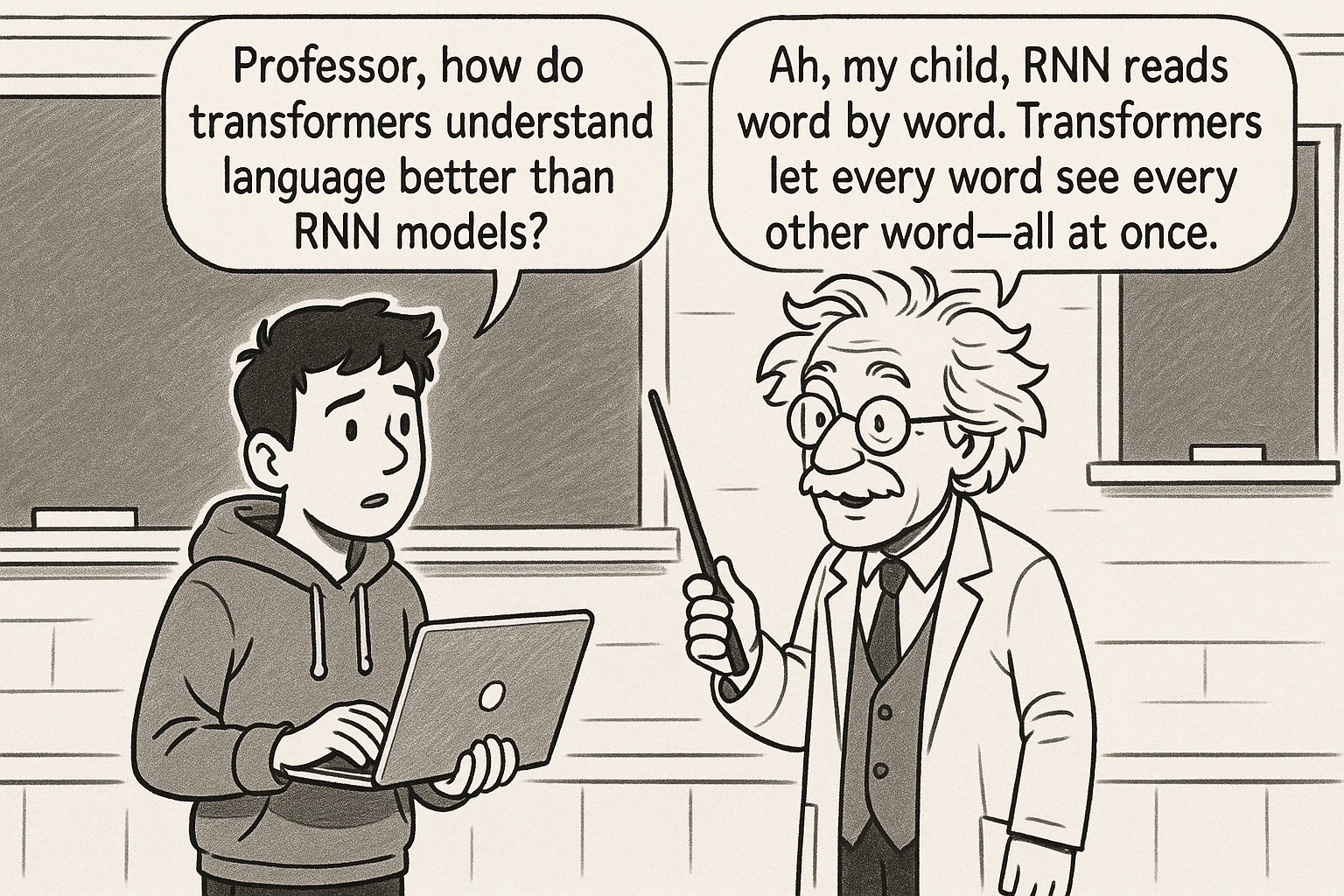Introduction
In 2017, eight researchers from Google published "Attention Is All You Need," a paper that fundamentally transformed natural language processing. Led by Ashish Vaswani, this work introduced the Transformer architecture, which replaced the dominant recurrent and convolutional approaches with a model based entirely on attention mechanisms. Originally designed for machine translation, this architecture became the foundation for virtually every major language model we use today, from BERT to GPT to the latest LLMs powering modern AI applications.
"Sometimes, the simplest ideas spark the biggest revolutions — replacing complex recurrence with pure attention changed the course of AI."
Core Ideas
The paper's central breakthrough was demonstrating that attention mechanisms alone could handle sequence-to-sequence tasks without any recurrence or convolution. Traditional models like RNNs and LSTMs processed sequences step by step, creating bottlenecks and making parallel computation difficult. The Transformer changed this by processing all positions simultaneously through its self-attention mechanism.
The architecture consists of two main components: an encoder and a decoder, each built from stacks of identical layers. The encoder has six layers, each containing two sub-layers - a multi-head self-attention mechanism and a position-wise fully connected feed-forward network. The decoder also has six layers but includes a third sub-layer that performs multi-head attention over the encoder's output.
Multi-head attention is the paper's key innovation. Instead of performing attention once, the model runs multiple attention functions in parallel, each focusing on different aspects of the input. This allows the model to simultaneously attend to information from different representation subspaces at different positions. The authors used eight attention heads, creating eight different ways of looking at the relationships between words.
Since the model has no inherent understanding of word order, positional encoding was introduced. This clever technique adds position information to the input embeddings using sine and cosine functions of different frequencies, allowing the model to distinguish between words at different positions without requiring sequential processing.
Breaking Down the Key Concepts
Think of the Transformer's attention mechanism as a very sophisticated way of highlighting important words in a sentence. When you read "The animal didn't cross the street because it was too tired," your brain automatically knows that "it" refers to "the animal." The Transformer learns to make these connections through attention.
Self-attention works like a group discussion where every participant (word) can directly talk to every other participant simultaneously. Unlike traditional models that pass information like a game of telephone, the Transformer allows every word to directly consider every other word's relevance.
Multi-head attention is like having multiple experts examine the same sentence for different purposes. One expert might focus on grammatical relationships, another on semantic meaning, and a third on temporal relationships. Each "head" specialises in finding different types of connections between words.
Positional encoding solves a fundamental problem: without it, the sentence "dog bites man" would be identical to "man bites dog" from the model's perspective. The encoding adds a unique fingerprint to each position, allowing the model to understand word order without sequential processing.
The encoder-decoder structure works like a translator who first thoroughly understands the source language (encoder) and then generates the target language (decoder) while constantly referring back to their understanding of the original text.

Results and Significance
The Transformer achieved remarkable results on machine translation benchmarks. On the WMT 2014 English-to-German translation task, it reached 28.4 BLEU score, improving over existing best results by over 2 BLEU points. On English-to-French translation, it established a new single-model state-of-the-art BLEU score of 41.8 after training for just 3.5 days on eight GPUs.
For developers working with NLP applications, this paper represents the foundation of modern AI. Every major language model you interact with - whether you're building chatbots, translation services, or content generation tools - uses principles established in this paper. The Transformer architecture enabled the scaling that led to models like GPT, BERT, and their successors.
The parallelisation benefits were equally significant. Unlike RNNs that required sequential processing, Transformers could process entire sequences simultaneously, dramatically reducing training time and enabling the massive scale of modern language models. This efficiency made it feasible to train models on much larger datasets.
The paper's impact extends beyond machine translation. The authors demonstrated the architecture's generalisability by successfully applying it to English constituency parsing, achieving excellent performance with both large and limited training data. This versatility foreshadowed the Transformer's later dominance across numerous NLP tasks.
From a practical standpoint, the architecture's success sparked the current wave of foundation models. Companies like OpenAI, Google, and others built upon these principles to create the large language models that power today's AI applications, making this paper one of the most influential in recent AI history.
Read the original paper here - https://arxiv.org/abs/1706.03762